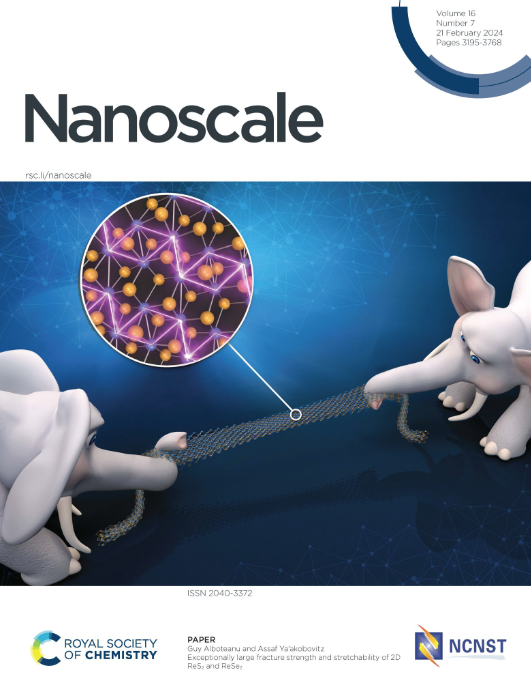Nano vacuum devices utilizing two dimensional semiconductors and their potential
IF 5.8
3区 材料科学
Q1 CHEMISTRY, MULTIDISCIPLINARY
引用次数: 0
Abstract
We have explored the potential of nanoscale vacuum channel transistors that utilize the edges of transition-metal dichalcogenides (TMDCs) as field emitters for high-frequency applications. The angstrom-scale thickness of monolayer TMDCs in a two-dimensional structure induces a strong field enhancement effect at the edge, facilitating cold emission. Additionally, their semiconducting nature enables control of the emission current by adjusting the tunneling barrier height through Fermi level control via the gate structure. We analyzed the field emission properties of monolayer TMDCs (MoS2, MoSe2, and WS2), examining their current-voltage characteristics based on Fowler-Nordheim theory within a three-terminal vacuum channel transistor system. In this configuration, the emitter is aligned towards the drain electrode, parallel to the substrate, and the carrier dynamics were investigated in detail within the TMDC channels. We further calculated the screening effect induced by gate bias modulation, taking into account the extent of the monolayer TMDC edge protrusion into the vacuum channel. Additionally, we studied the distinctive modulation of the field enhancement factor, which can be adjusted through gate bias control. Finally, under a source-drain bias of 100 V, the transistors demonstrated both cutoff and maximum oscillation frequencies in the sub-terahertz to terahertz range, confirming their high-frequency operational potential.利用二维半导体的纳米真空装置及其潜力
我们已经探索了利用过渡金属二硫族化合物(TMDCs)边缘作为高频应用场发射体的纳米级真空通道晶体管的潜力。二维结构单层TMDCs的埃尺度厚度在边缘处产生了强场增强效应,有利于冷发射。此外,它们的半导体特性使得通过栅极结构通过费米能级控制调节隧道势垒高度来控制发射电流成为可能。我们分析了单层TMDCs (MoS2, MoSe2和WS2)的场发射特性,并基于Fowler-Nordheim理论在三端真空通道晶体管系统中研究了它们的电流-电压特性。在这种结构中,发射极对准漏极,平行于衬底,并且详细研究了TMDC通道内的载流子动力学。考虑到单层TMDC边缘向真空通道的突出程度,我们进一步计算了栅极偏置调制引起的屏蔽效应。此外,我们还研究了场增强因子的独特调制,可以通过栅极偏置控制来调节。最后,在100 V的源漏偏置下,晶体管在次太赫兹到太赫兹范围内显示了截止频率和最大振荡频率,证实了它们的高频工作潜力。
本文章由计算机程序翻译,如有差异,请以英文原文为准。
求助全文
约1分钟内获得全文
求助全文
来源期刊

Nanoscale
CHEMISTRY, MULTIDISCIPLINARY-NANOSCIENCE & NANOTECHNOLOGY
CiteScore
12.10
自引率
3.00%
发文量
1628
审稿时长
1.6 months
期刊介绍:
Nanoscale is a high-impact international journal, publishing high-quality research across nanoscience and nanotechnology. Nanoscale publishes a full mix of research articles on experimental and theoretical work, including reviews, communications, and full papers.Highly interdisciplinary, this journal appeals to scientists, researchers and professionals interested in nanoscience and nanotechnology, quantum materials and quantum technology, including the areas of physics, chemistry, biology, medicine, materials, energy/environment, information technology, detection science, healthcare and drug discovery, and electronics.
 求助内容:
求助内容: 应助结果提醒方式:
应助结果提醒方式:


